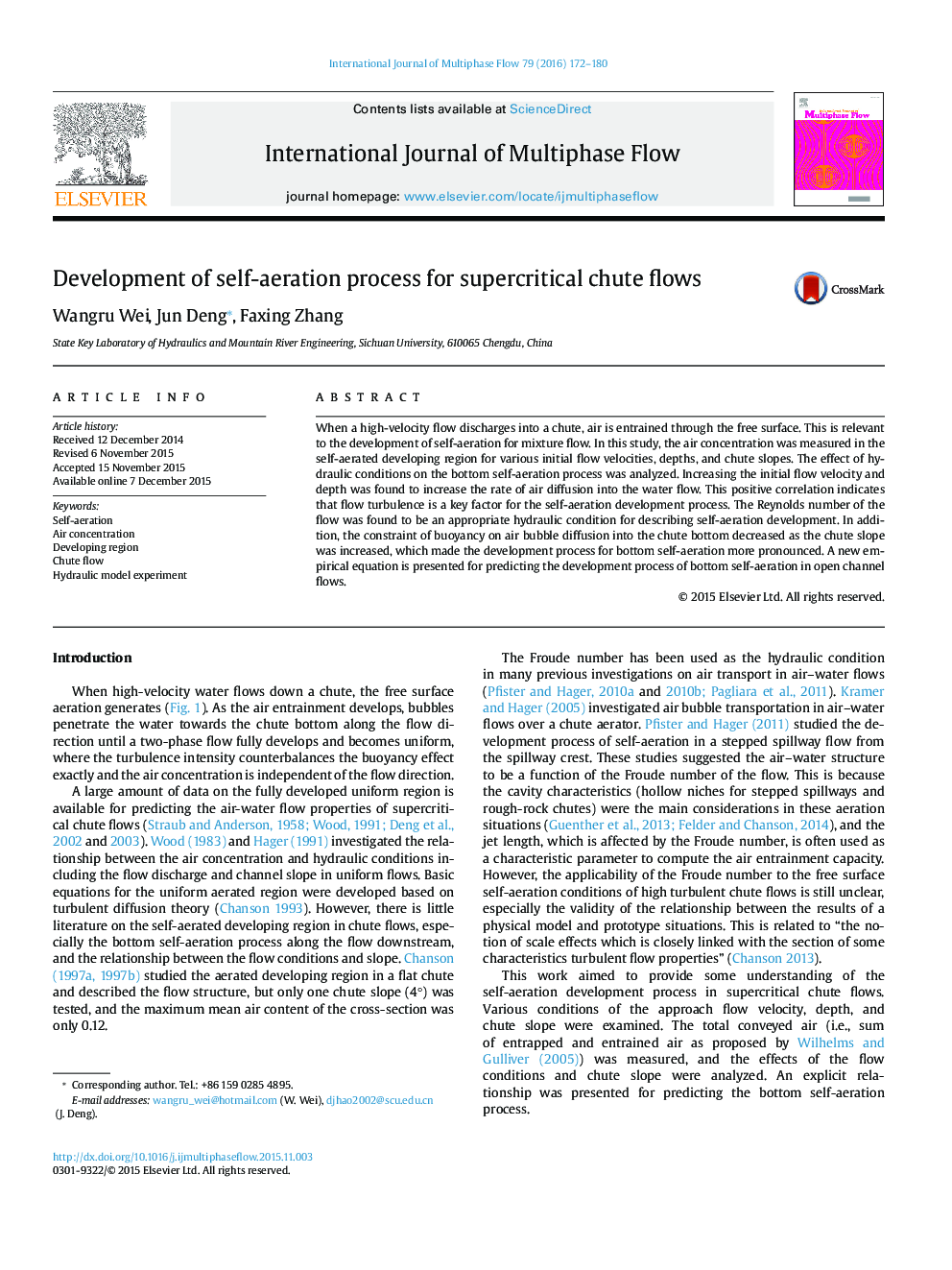| کد مقاله | کد نشریه | سال انتشار | مقاله انگلیسی | نسخه تمام متن |
|---|---|---|---|---|
| 667064 | 1458499 | 2016 | 9 صفحه PDF | دانلود رایگان |
• Self-aeration process develops more rapidly with approach flow velocity and depth.
• Reynolds number is appropriate as hydraulic condition for self-aeration process.
• Self-aeration process affected by chute slope is more rapid with turbulence level.
• A new equation is provided to predict self-aeration process in developing region.
When a high-velocity flow discharges into a chute, air is entrained through the free surface. This is relevant to the development of self-aeration for mixture flow. In this study, the air concentration was measured in the self-aerated developing region for various initial flow velocities, depths, and chute slopes. The effect of hydraulic conditions on the bottom self-aeration process was analyzed. Increasing the initial flow velocity and depth was found to increase the rate of air diffusion into the water flow. This positive correlation indicates that flow turbulence is a key factor for the self-aeration development process. The Reynolds number of the flow was found to be an appropriate hydraulic condition for describing self-aeration development. In addition, the constraint of buoyancy on air bubble diffusion into the chute bottom decreased as the chute slope was increased, which made the development process for bottom self-aeration more pronounced. A new empirical equation is presented for predicting the development process of bottom self-aeration in open channel flows.
Figure optionsDownload as PowerPoint slide
Journal: International Journal of Multiphase Flow - Volume 79, March 2016, Pages 172–180
